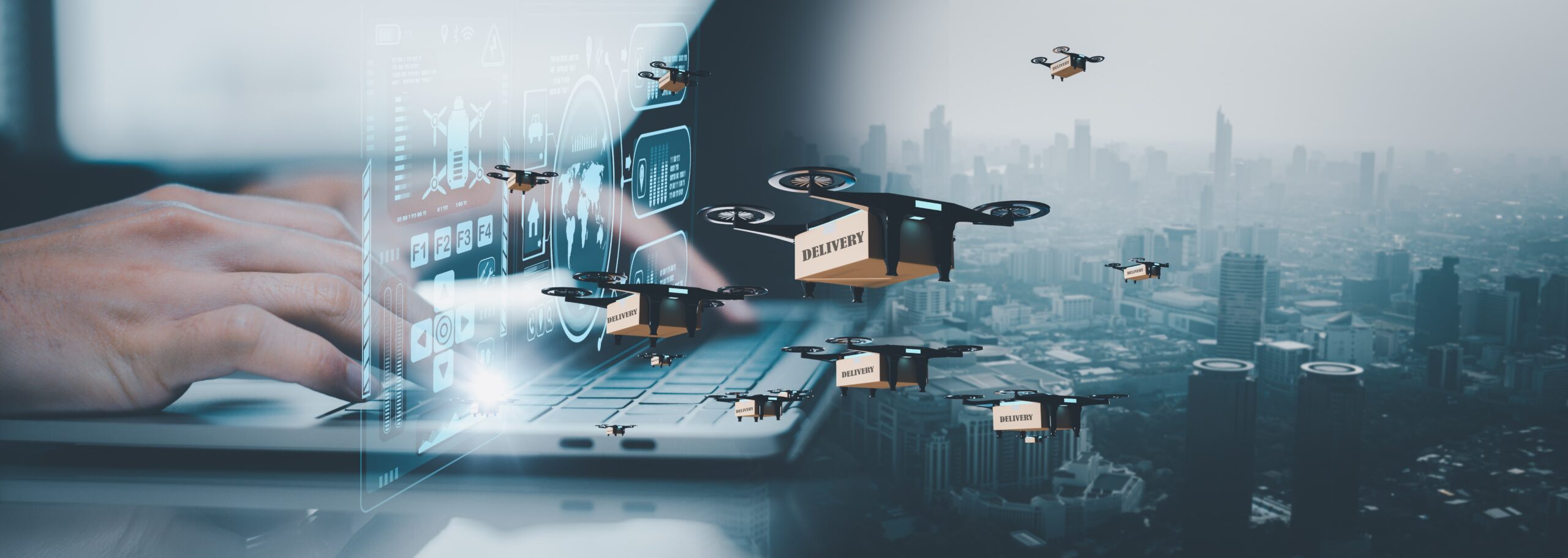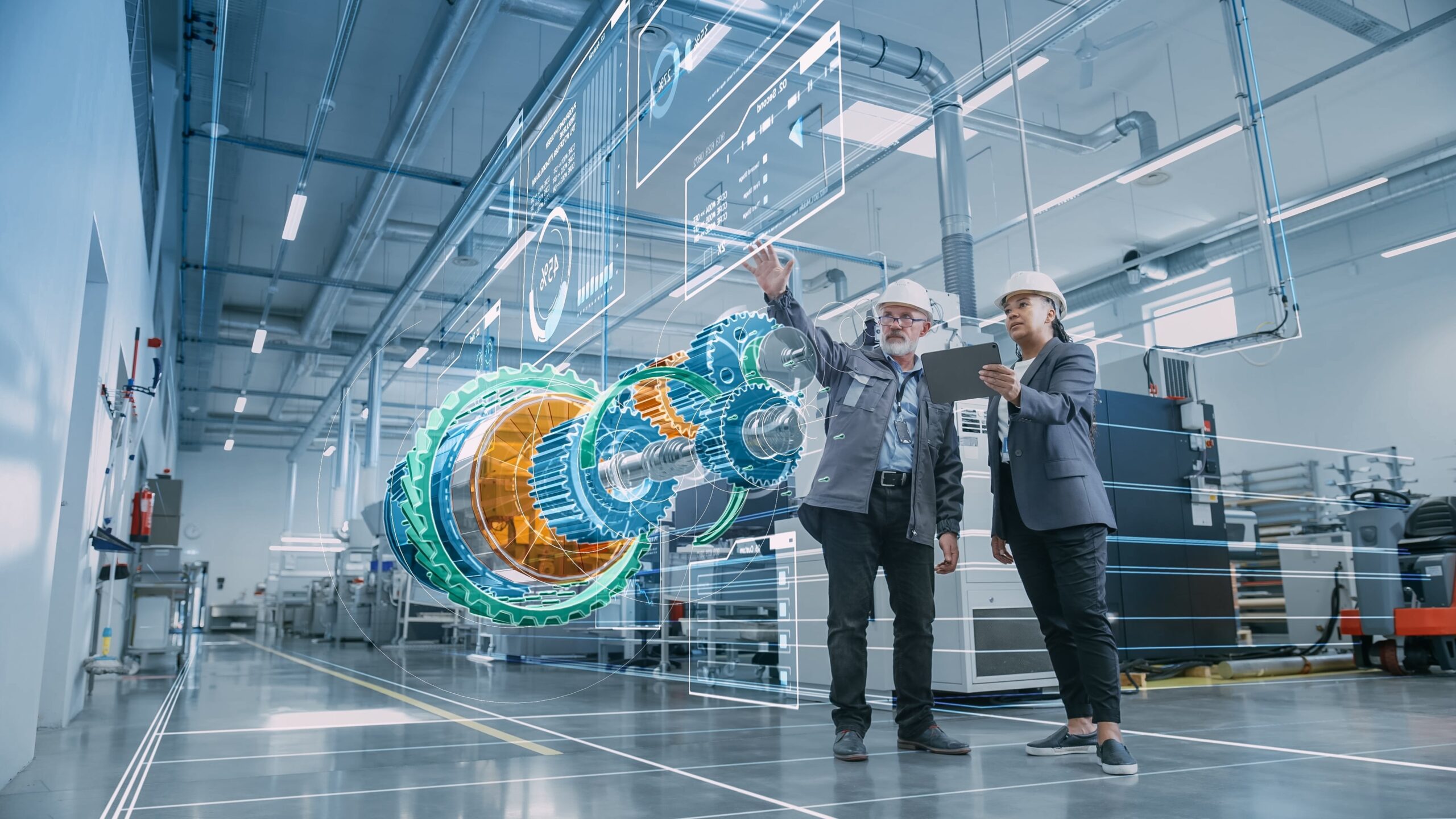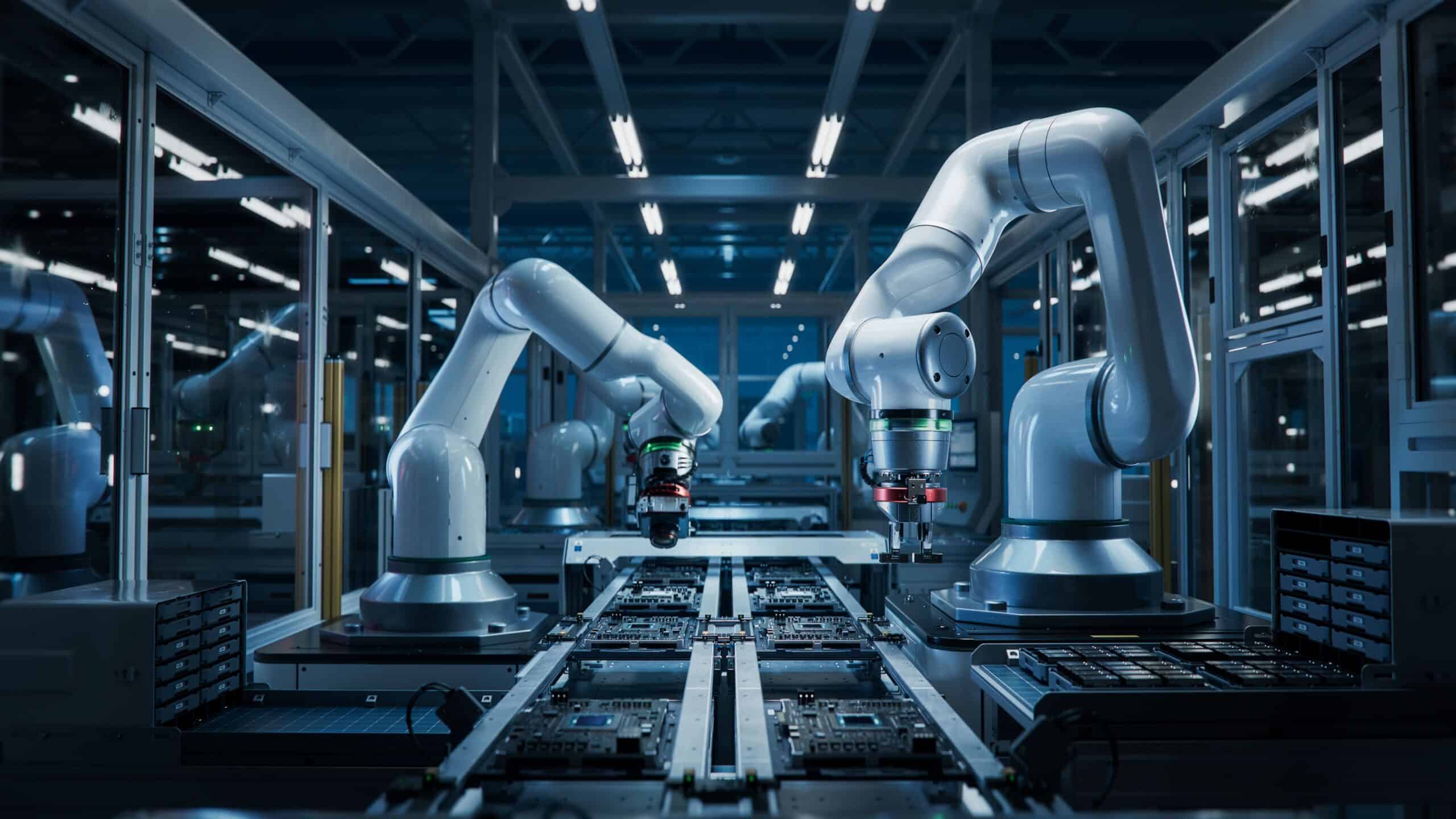- Executive summary
- The cost of doing business
- How to turn returns into opportunities
- Optimising reverse logistics processes
- Are big data and analytics the solution to the returns issue?
- The impact of returns on retailers and consumers
- A more circular future
- Learnings
Executive summary:
Returns can be an inconvenience for companies and customers alike, but they are a necessary part of doing business. They enable companies to build trust while enabling customers to shop with more confidence. However, companies have often treated reverse logistics as an afterthought, choosing instead to focus on the forward logistics aspect of their operations. Thanks to the explosion in e-commerce, however, it appears some retailers are changing their focus.
- Dutch retailer Omoda has developed an AI model that can predict whether an item will be returned with 75% accuracy.
- Vendidit is an AI-powered platform that seamlessly connects companies with secondary market buyers.
- According to the National Retail Federation, retail returns accounted for 14.5% of all sales in 2023, with the global value of returned merchandise estimated at US$743 billion.
- “Optimising the returns process is a key lever to maintain a great shopping experience and support customer loyalty,” says Kevin Kuntz, senior vice president of global logistics fulfilment at Gap.
- “Big data and analytics can be used to help retailers transform their reverse logistics programme by focusing on the net recovery of every return,” explains Mike Plasencia, director of new product strategy at Ryder.
While innovative technologies like AI and data analytics offer promising solutions, the complexity of the returns issue demands a careful approach. As the retail industry moves towards a more circular economy, companies will have to find a way to balance consumer convenience with environmental responsibility.
The cost of doing business
How many times has this happened to you: you order something online, but when it finally arrives, it isn’t what you expected. Perhaps the product description doesn’t match or you simply don’t like the way it looks. In the case of an electronic device, you may find it does not perform as well as expected. Whatever the reason may be, you decide that the product needs to be returned.
Companies have historically viewed product returns as an inevitable part of doing business. While some returned products would find their way back onto shelves, more often than not they ended up in a landfill. However, the growing demand for sustainability and the e-commerce explosion—which increased the number of returns—forced many companies to reconsider their approach. Instead of simply disposing of returned products, a growing number of companies are looking towards the circular economy, and at ways of repairing, reselling, and recycling the items customers don’t want.
How to turn returns into opportunities
While each return carries significant financial and environmental costs, an efficient returns process can help companies derive maximum value from returned products.
Everything a company does after a customer decides to return a product is considered to be an aspect of reverse logistics. The process typically involves three key steps, beginning with the retrieving the product from the customer. The product is then transported to the company’s reverse distribution centre, where it is evaluated, repaired, repackaged, and prepared for shipping. The final step is to determine what to do with the product: resell, sell for parts, donate, recycle, or dispose of it.
In addition to incurring significant financial costs for the company, each return has an environmental footprint. This is due in part to the raw materials and energy used to manufacture the product, which can be considered wasted if the product is destroyed before it can find a new application. Another issue stems from the reality that some consumers knowingly abuse return policies by consistently ordering items in multiple sizes even though they only intend to keep one—a practice known as ‘bracketing’—while others order products with the intention of returning them after using them once or twice. This can lead to a serious and unnecessary increase in the amount of goods that are wasted.
Despite these concerns being quite substantive, returns are necessary because they demonstrate to consumers that the company stands behind its products. This, in turn, helps to build trust. Since returns cannot be avoided, the next best thing companies can do is minimise the number that actually occurs. This can be achieved by ensuring that all products are accurately described and that they are easy to set up and use. Even then, there will always be some who return a product even if it’s fully functional.
To minimise their losses, companies are increasingly looking for ways to improve the efficiency of their reverse logistics processes—something they have historically neglected to do. Some are focusing their efforts on refurbishing returned products so that they can be put back into circulation, while others are shortening return windows and partnering with companies with quicker return ecosystems to ensure that seasonal items are back on shelves while they are still in demand. Some companies have even started charging return fees, which has proven rather effective at preventing bracketing.
“By allowing at-home pickup for order returns, we’ve eliminated the need for out-of-home trips, making the returns experience effortless.”
Marcus Hoed, co-founder of DutchX
Optimising reverse logistics processes
A growing number of companies are using technology to optimise their reverse logistics processes.
service, which it promises will make it easier for customers to return items they don’t want to keep. Once a customer schedules a pickup, a DutchX delivery specialist will arrive at their doorstep to retrieve the item. They will also provide the customer with tracking information that will allow them to monitor every step of the return journey. “By allowing at-home pickup for order returns, we’ve eliminated the need for out-of-home trips, making the returns experience effortless,” says Marcus Hoed, co-founder of DutchX. This is becoming an increasingly widespread practice, with many major retailers and e-commerce platforms now offering similar services, including Amazon, Walmart, and Curry’s, to name just a few.
Returns are particularly problematic for online retailers, with some like Dutch footwear and clothing retailer Omoda seeing as many as 50% of products purchased via their website sent back. To address this issue, the company partnered with Google and the marketing services company Dept to develop an AI model that would enable them to predict whether an order would be returned. Whenever a customer makes a new order, the AI analyses their order and returns history, along with real-time data like payment methods, to determine how likely the order is to be sent back. According to the company, the model has demonstrated a high accuracy rate—75%—in predicting returns. While it has yet to explain the precise nature of its success in doing so, it further claims this new model has decreased total returns by 5%, leading to an increased profit margin of 14%.
Finding buyers for returned products can be a difficult process too, sometimes taking weeks before a new sale is made. Recognising the need for a more efficient process, American entrepreneur John Paul DeJoria joined forces with Gary Stephens, chief executive of reverse logistics company Renew Logic, to create an AI-powered platform called Vendidit, which connects companies with secondary market buyers. Companies can use it to list thousands of returned items within minutes and browse the platform’s existing buyer pools, including wholesalers, IT asset liquidators, businesses, and consumers. They can also create private auctions for select buyers. This not only helps companies resell their items at the highest value possible but also benefits the environment by reducing the amount of waste.
“Optimising the returns process is a key lever to maintain a great shopping experience and support customer loyalty.”
Kevin Kuntz, senior vice president of global logistics fulfilment at Gap
Are big data and analytics the solution to the returns issue?
The increased volume of returns has become a pressing concern for the retail industry. Could big data and analytics offer a solution?
Experts agree that product returns are becoming a growing concern for the retail industry. “The increasing number of returned parcels presents a unique challenge to retailers, who need better visibility to understand trend changes, manage staffing levels, reduce processing times, and create effective distribution plans,” says Tobias Buxhoidt, founder of post-purchase platform ParcelLab. Part of the problem is that reverse logistics processes have often been neglected in favour of those related to fulfilment, inventory management, and shipping. “There’s a real issue of what is the cost and the impact, and how do you manage that when supply chains are really designed for forward logistics as opposed to reverse logistics,” remarks Amena Ali, chief executive of reverse logistics company Optoro.
The best way to address this issue is to prevent returns from happening in the first place. “The main solution to this issue is to provide the customer with a lot more information about how products fit and, ideally, help them understand how the products may look and feel on their body type,” argues Neil Saunders, managing director of retail at research firm Globaldata. However, this is only part of the solution. “Sizing software can help shoppers make more informed purchase decisions and reduce bracketing, but this behaviour won’t disappear entirely. At the end of the day, shoppers value trying on goods for themselves before deciding whether to keep them,” adds Ali.
Companies also need to find a way to reduce the complexity of the returns process. “Optimising the returns process is a key lever to maintain a great shopping experience and support customer loyalty,” says Kevin Kuntz, senior vice president of global logistics fulfilment at Gap. Big data and analytics can play a key role in these efforts. “Today, big data and analytics can be used to help retailers transform their reverse logistics programme by focusing on the net recovery of every return,” explains Mike Plasencia, director of new product strategy at supply chain management company Ryder. “This is a shift in focus from simply getting the return back to figuring out what to do with each return to maximise profit.”
The next step is to improve the connectivity between all touchpoints in the returns process. “If you’re still unable to resell the vast majority of returns, we’re still going to fill up the landfill with returns,” says Tim Robinson, corporate vice president of supply chain management company Blue Yonder. “You need to be able to connect all touchpoints from before purchase to the point at which a returned item is back in stock and resalable, and to generate actionable insights from that journey so that retailers can take ownership over their returns and logistics providers can process them as efficiently as possible. That requires more than just a point solution at any one stage of the journey.”
The impact of returns on retailers and consumers
Developing a successful returns ecosystem may not be easy but it’s an absolute must, as surveys show just how important returns are to consumers.
Research shows that retail returns have grown steadily over the years, driven primarily by the rise of e-commerce. In 2012, for example, returns accounted for 8.8% of all retail sales. By 2023, the figure increased to 14.5%, with the value of returned merchandise estimated at a staggering US$743 billion, according to a 2023 report jointly published by National Retail Federation and Appriss Retail. As is to be expected, return rates are higher for online sales, with customers returning 17.6% or US$247 billion of merchandise purchased online. On the other hand, brick-and-mortar returns are estimated at around 10%, which amounts to US$371 billion in merchandise value.
The report further found that retailers are increasingly becoming victims of return fraud, which accounted for US$101 billion in global losses in 2023. On average, retailers lose US$13.70 for every US$100 in returned merchandise. When asked which type of return fraud they experienced most often, 49% of respondents cited returns of used, non-defective merchandise. The return of shoplifted or stolen merchandise was the second most common type of return fraud, as indicated by 44% of respondents, followed by returns of merchandise purchased on fraudulent or stolen tender (37%), and return fraud from organised retail crime groups (20%).
Retailers experience numerous challenges in developing a successful returns ecosystem, reveals a 2023 survey by e-commerce fulfilment provider Radial. 60% of respondents said the biggest challenge is in reselling returned inventory, while a similar amount indicated high repackaging and restocking costs. A further 43% highlighted challenges around maintaining healthy profit margins due to returns management. Some of these challenges can be attributed to the lack of consistency and centralisation. According to the NRF/Appriss report, 44.2% of companies manage reverse logistics via allocated space within their distribution centres, while 30.2% leave it to individual stores. A further 23.3% use a third-party provider to assist with the process, and 16.3% operate their own dedicated reverse logistics centre.
Despite these challenges, retailers cannot afford to ignore the reverse logistics processes because returns are very important to consumers. A 2022 survey commissioned by PayPal found that 86% of consumers review a retailer’s returns policy before making a purchase, while 50% have abandoned a purchase because the retailer didn’t offer a convenient return method. While retailers are increasingly offering at-home pick-ups, only 21% of consumers said this was their preferred return method, while 54% indicated a preference for in-person drop-offs. Mail returns are becoming less and less preferred by consumers, with 79% of shoppers under 30 calling them annoying and over 40% saying they would rather sit in rush hour traffic than make a mail return.
A more circular future
In a world drowning in waste, reverse logistics is paving the way towards a greener, more circular future.
Reverse logistics is expected to play a key role in helping our society transition to a more circular economy, in which resources are continuously used, recovered, and regenerated in a closed loop. For instance, electronics manufacturers can use reverse logistics to collect old devices, extract valuable components, and reintegrate them into new products. In the fashion industry, returned clothing can be resold, upcycled, or recycled into new fabrics. Circularity is also a growing trend within the automotive aftermarket, particularly in areas such as defective electric vehicle batteries and worn-out tyres.
By optimising transportation routes for returns, reverse logistics can help reduce carbon emissions associated with product lifecycles. Indeed, as consumers become more environmentally conscious, companies that excel in reverse logistics could gain a competitive edge without compromising their sustainability goals. Furthermore, a well-coordinated returns ecosystem can help companies manage the return flow of products more efficiently, enabling them to recover value from used items and reduce waste. This process not only minimises environmental impact but also helps create new economic opportunities through the reintegration of reclaimed resources into the supply chain.
Learnings
The rise of e-commerce has brought the challenges associated with product returns into sharp focus, forcing retailers to reassess their approach to reverse logistics. As return rates continue to climb, companies are increasingly recognising the need for more efficient, cost-effective, and environmentally responsible solutions.
- An efficient returns process can help companies reduce their costs and minimise their environmental impact.
- Better returns policies could also benefit consumers, enabling them to shop with greater ease and confidence.
- Reverse logistics can also serve as the starting point for a circular economy around returned products.
- However, the lack of consistency and centralisation in how companies handle returns management could present a major challenge.
As we progress towards a more sustainable retail ecosystem, we need to consider the broader picture. Are we prepared for the cultural and behavioural changes required to truly embrace a circular economy? And are retailers ready to embrace a world where the act of returning a product presents an opportunity for innovation, not just a cost burden?




